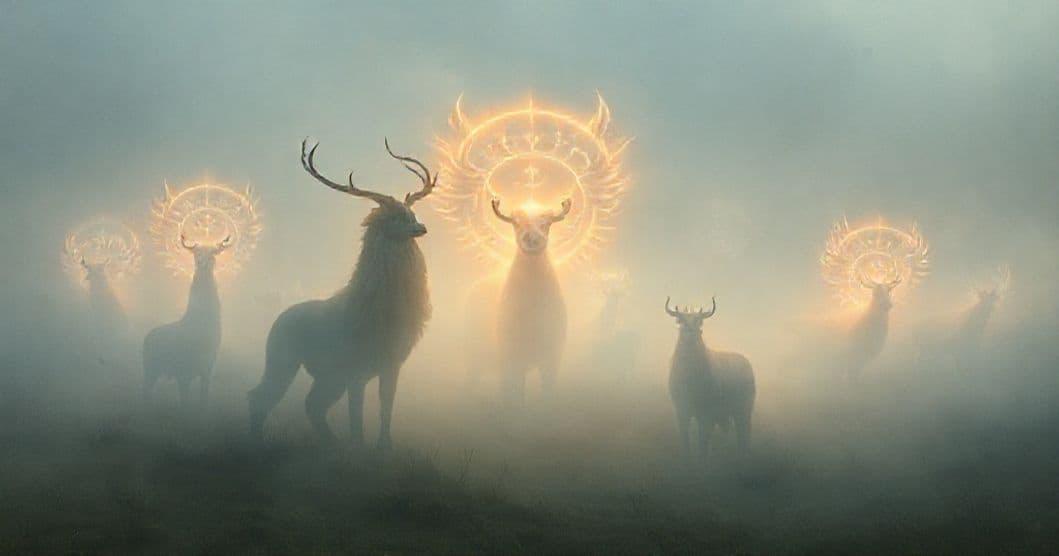Core Symbols: Animals as Dream Sigils and Biblical Signifiers
In dream language, animals aren’t random images—they’re sigils, carrying coded messages from your subconscious. A sigil, in esoteric terms, is a symbolic mark charged with intent, and animal sigils in dreams act as personal talismans. In biblical tradition, animals often served as messengers too: Noah’s dove brought an olive branch, Jonah’s whale held divine purpose, and the serpent tempted Eve yet taught wisdom. Today, these same creatures appear in dreams not as literal warnings, but as emotional barometers. A lion might roar of untapped courage, a dove of yearning for peace, and a serpent of hidden wisdom or temptation. Notice the animal’s behavior—did it flee, protect, or guide? These actions, paired with its biblical resonance, unlock deeper truths about your current emotional state.
Consider Sarah, a woman who dreamed of a golden calf in a desert landscape. Though the biblical golden calf symbolizes idolatry, her dream showed the calf as gentle, not threatening. This revealed her struggle between pursuing worldly goals and spiritual fulfillment—a tension many modern dreamers face in careers or relationships. The animal’s form, not just its biblical name, matters: a calf might represent nurturing goals, while a ram (another biblical symbol of sacrifice) could signal self-denial. Your dream’s animal is both a mirror and a guide, reflecting what your waking life needs to acknowledge.
Psychology Lens: Jungian Archetypes and the Collective Unconscious
Want a More Personalized Interpretation?
Get your own AI-powered dream analysis tailored specifically to your dream
🔮Try Dream Analysis FreeCarl Jung’s theory of the collective unconscious offers a key to animal dreams. He believed animals represent archetypal energies—universal patterns of human experience. A wolf, for example, might embody the shadow self (unacknowledged anger or instinct), while a deer could symbolize vulnerability and intuition. This aligns with biblical interpretations: the serpent in Genesis isn’t just a tempter but a symbol of primal knowledge, much like Jung’s shadow archetype. Freud, however, viewed animal dreams as repressed instincts—your id’s raw urges finding expression in sleep. The tension between these views highlights a truth: animal dreams are both personal and universal.
Neuroscience adds another layer: during REM sleep, the brain processes emotional memories, turning them into symbolic narratives. If you’ve recently felt overwhelmed, a bear (biblical symbol of strength) might appear as a protector, not a threat. Conversely, a snake could emerge if you’re navigating uncertainty—serpents in dreams often signify transformation, as in the biblical story of Moses’ staff turning to a snake (a symbol of divine power). This scientific-psychological blend shows animal sigils aren’t just myths; they’re your brain’s way of integrating emotions into coherent stories.
Life Triggers: What Brings Animal Sigils to the Surface
Animal dreams rarely arise randomly. They’re often triggered by life events that stir primal emotions. A job loss might summon a wolf, symbolizing the need to adapt or hunt for new opportunities. A spiritual retreat could bring a dove, reflecting inner peace. Cultural context also matters: someone raised in a religious household might dream of a dove after a conflict, echoing biblical peace. Conversely, a skeptic might see a serpent in a garden, not as temptation, but as curiosity about hidden truths.
Modern life amplifies these triggers. Social media overload, for example, can make you feel hunted by comparisons, manifesting as a predatory animal. Digital-age anxieties about identity might surface as shapeshifting animals—fluid, uncertain, yet full of potential. Even small daily stressors add up: a week of criticism could lead to a sheep (biblical symbol of meekness) dream, reflecting a desire to retreat or be gentle with oneself. The key is to track when these animals appear, not just what they are, but how they make you feel.
What To Do Next: Unpacking Your Animal Dream’s Message
Start with short-term reflection: immediately after waking, write down the animal, its color, actions, and emotions. Did it seem friendly, dangerous, or neutral? Note any recurring details—a white wolf vs. a black wolf, for example, might signal clarity vs. confusion. Next, connect these details to recent life events. If you dreamed of a phoenix rising from ashes, and you’re starting a new project, this could signify rebirth. If you’re avoiding a difficult conversation, a lion might urge you to be bold.
For medium-term exploration, experiment with the animal’s traits. If you dreamed of a dove, practice mindfulness meditation daily. If it’s a lion, take one small assertive action weekly. Keep a dream journal to spot patterns—do you see the same animal during times of change? This consistency reveals recurring themes, like a recurring eagle (symbol of vision) during career transitions.
Long-term integration means living the animal’s lesson. A snake dream might teach you to embrace uncertainty, while a lamb could remind you to nurture kindness. Remember, biblical mirrors aren’t dogma—they’re tools. If you feel disconnected from spirituality, let the animal guide you toward self-compassion, not judgment. The goal is to honor the message without forcing it into a single interpretation.
FAQ
Q: Can different animals have conflicting meanings in dreams? A: Absolutely. A snake might symbolize fear or wisdom depending on context—if it’s slithering away, it could mean avoiding a problem; if it’s coiled protectively, it might signal self-preservation.
Q: How do I know if a biblical animal reference is relevant to my dream? A: Reflect on your emotional response and current life themes. A dove might feel comforting if you’re stressed, even if you’re not religious, because peace is a universal human need.
Q: What if I dream of an animal I’ve never seen before? A: Focus on its unique traits—unusual animals often represent untapped aspects of yourself, like a winged fox symbolizing creativity or a water-dwelling lion signifying emotional depth.
